
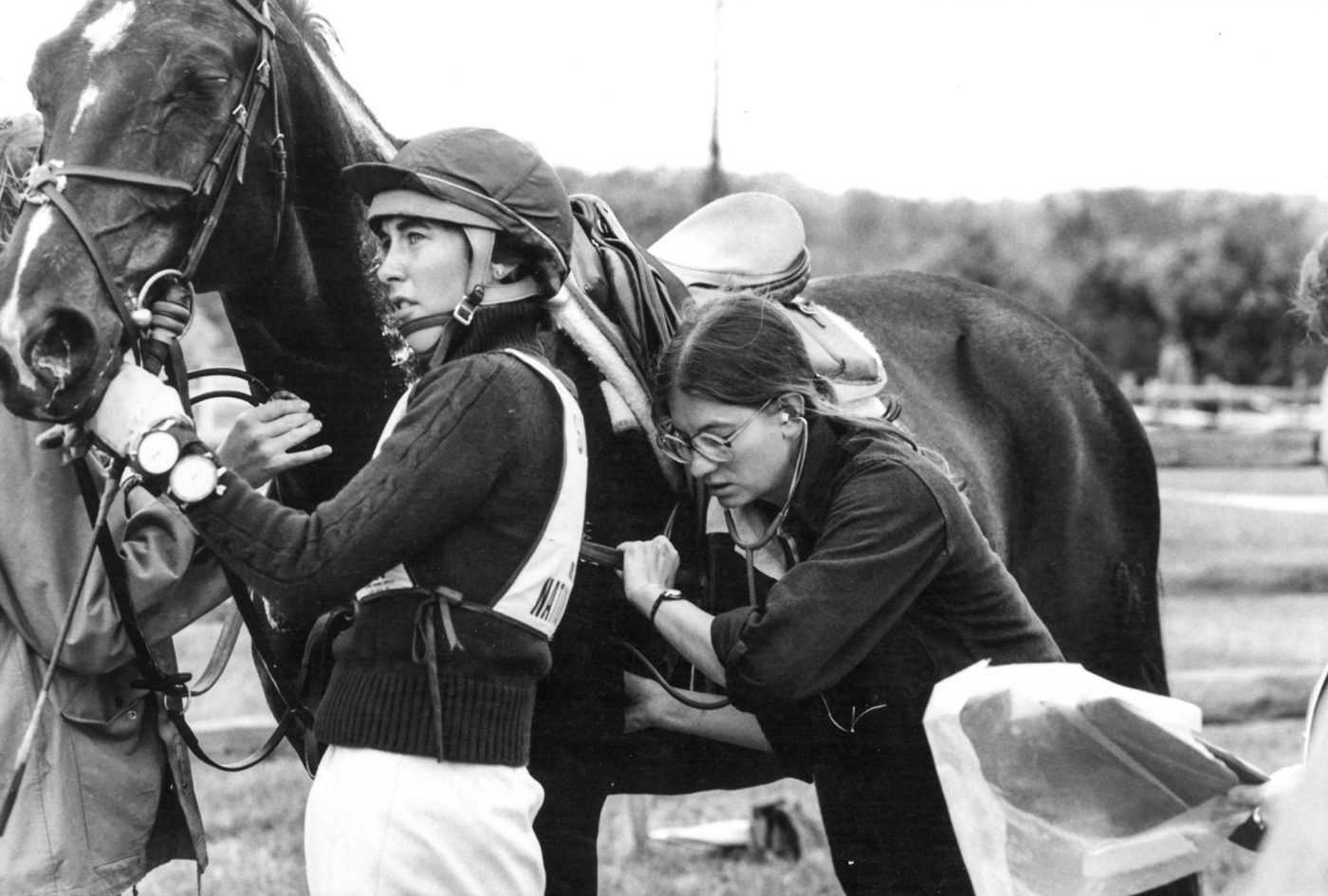
This article was originally published to the USEA website on April 10, 2018.
As a horse owner and competitor is it important to pay attention to your horse’s health at all times. Becoming familiar with your horse’s vital signs is essential to monitoring your horse in competition and in the stable. Here is a quick guide to taking your horse’s vital signs - it is a good idea to practice taking these signs to increase your familiarity with what is normal for your own horse. Understanding these norms may enable you to pick up on any problematic changes in your horse’s health sooner.
History
You are likely already doing this part! Daily monitoring of your horse’s habits is a vital part of monitoring equine health. It is important to know what is normal for your horse - did he produce his normal amount of manure over the last 24 hours? Was the consistency of the manure usual? Is his appetite usual? Is his attitude usual? Did he walk at his usual pace? Any significant change in your horse’s habits may indicate a problem and should be investigated.
Temperature
99.5-101.5 degrees Fahrenheit is the normal rectal temperature range for a healthy horse.
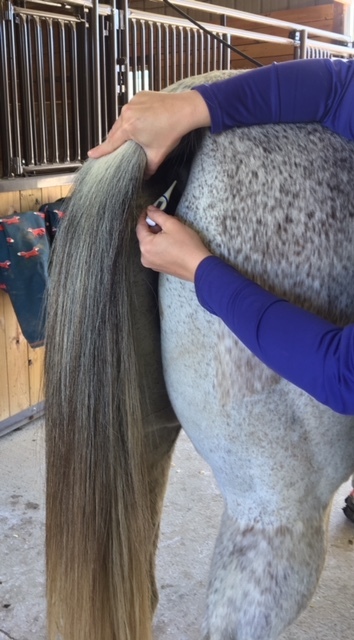
It is a good idea to keep a thermometer on hand and in the trailer at competitions.
Use caution when taking your horse’s rectal temperature for the first time. Stand in a safe spot if the horse was to react or kick and have a confident handler assist! Add a bit it lubricant to the tip of your thermometer and gently place it in your horse’s rectum. Some thermometers need to be held in place while others may be placed and retrieved after 2 minutes.
Illness, exercise, trailering, and other factors can increase rectal temperature.
Pulse
28-48 beats per minute is the normal heart rate of a horse at rest.
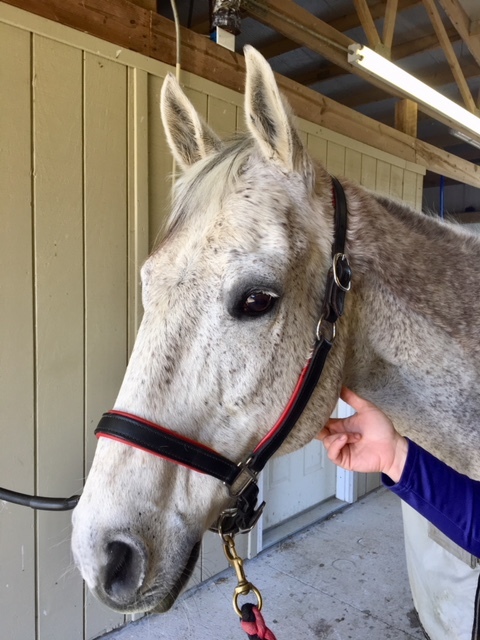
To take the pulse, place two curled fingers in the groove under the horse’s jaw. Use the back of his eye as a landmark as to how far back or forward on the mandible the artery may lay. Feel for a cord like structure that is approximately the diameter of a pencil. Place gentle pressure over this structure and you will feel the pulsating artery! Count the pulse for 15 seconds and multiply by 4 to get the total number of beats per minute.
Be patient - it takes practice to master this skill. Pulse may increase with excitement, exercise, dehydration, or illness.
Respiration
8-16 breaths per minute is the normal respiratory rate for a horse at rest.
Watch your horse’s flank area for a full minute and count the number of breaths he takes. Respiration rate may increase with excitement, exercise, or illness.
Mucus Membranes
A normal horse should have pink and moist mucus membranes.
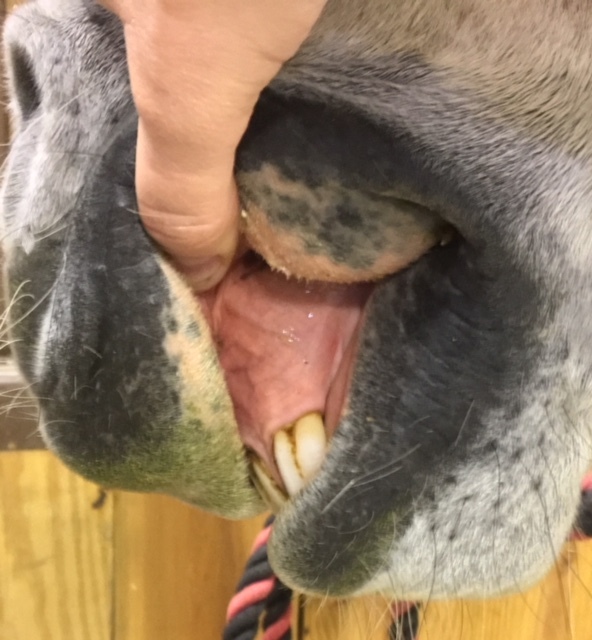
Lift the corner of your horse’s upper lip and look at the color of his gums - they should be a bright bubble gum pink color. Lighting can make assessing color difficult at times - if you question the color compare them to your own gum color! Gums that are pale pink, yellow, grey, or brown tinted may indicate a problem with your horse’s health.
While you are looking at the gums for color, also notice the moisture content of the gums. Healthy horse gums are moist and have a thin layer of saliva covering them. Gums that are dry or feel tacky to the touch may indicate dehydration in the horse.
Capillary Refill Time (CRT)
1-2 seconds is the normal capillary refill time in a healthy horse.
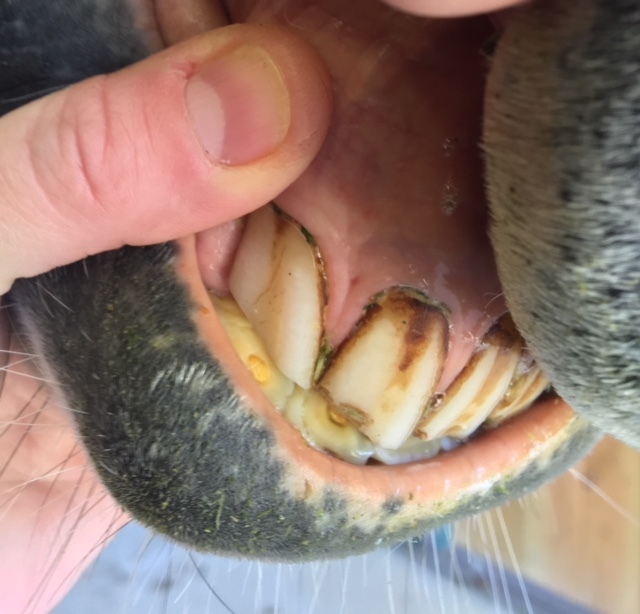
Capillary refill time, or CRT, is the amount of time it takes a horse’s capillaries to refill with blood after the blood has been removed from the capillary. While you have the horse’s upper lip lifted, use your thumb to press on the gums above the front teeth. Press an area for 1-2 seconds until the tissue is white (you have successfully pressed the blood out of the capillaries). Then count the time it takes for that white area of tissue to return to the normal pink color of the surrounding tissues.
A longer capillary refill time may indicate dehydration or circulation problems.
Dr. Michelle Gardner grew up in Rowan County riding on farm calls and working at Large Animal Medicine and Surgery with her father, Dr. Andy Gardner. She received a BS in Biology from North Carolina State University in 2005. She then continued her studies and graduated from the North Carolina State University College of Veterinary Medicine in 2009. After graduation she completed a 12-month, specialized internship in Equine Medicine and Surgery at Louisiana State University School of Veterinary Medicine. In August 2010 Dr. Michelle returned to North Carolina and joined Large Animal Medicine and Surgery. Her professional interests include equine lameness, internal medicine, and surgery. When Dr. Michelle is not working, she enjoys riding her horse Goose.
Seventeen-year-old Carolyn Rice, a high school junior from Johns Creek, Georgia, has spent the last 10 years riding at Willow South Riding School—the very place where she first sat on a horse. What started as a casual introduction quickly became a lifelong passion.
A field of top veteran riders is entered in this year’s Cosequin Lexington CCI4*-S, a US Equestrian Open Eventing Series Qualifier, at the Defender Kentucky Three-Day Event, which returns to the Kentucky Horse Park, April 24-27.
Trainers are some of the most important people in our lives. They develop our skills, ensure that our horses receive quality care, and look out for our best interests as equestrians.
The USEA is saddened to hear of the passing of Margaret Joyce Good of Leesburg, Virginia. Margaret passed away peacefully Thursday, February 27, 2025. Born October 8, 1929, in Clay Township, Iowa, she was the daughter of the late Clark and Jane Pfiefer.